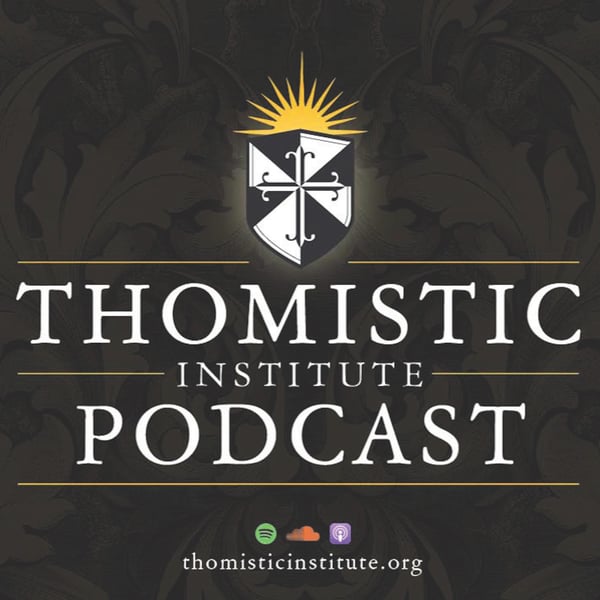An Historical Overview: The Growth of Marriage as Avenue of Holiness | Fr. Thomas Petri, O.P.
The Thomistic Institute
The Thomistic Institute
4.8 • 729 Ratings
🗓️ 10 February 2025
⏱️ 58 minutes
🧾️ Download transcript
Summary
Fr. Thomas Petri provides a historical overview of the evolving understanding of marriage as a path to holiness within the Catholic Church, set against the backdrop of societal changes, medical advancements, and challenges to traditional Christian views on procreation and contraception in the 20th century.
This lecture was given on March 22nd, 2024, at Dominican House of Studies.
For more information on upcoming events, visit us at thomisticinstitute.org/upcoming-events.
About the Speaker:
Father Thomas Petri, O.P. is the President of the Pontifical Faculty of the Immaculate Conception at the Dominican House of Studies, where he also serves as an assistant professor of moral theology and pastoral studies. Ordained a priest in 2009, he holds a Doctorate in Sacred Theology from The Catholic University of America.
Keywords: Alice Von Hildebrand, Anglican Communion, Christian Marriage, Conjugal Act, Contraception, Dietrich Von Hildebrand, Humanae Vitae, St. John Paul the Second, Vatican II, Theology of the Body
Transcript
Click on a timestamp to play from that location
| 0:00.0 | Welcome to the Tomistic Institute podcast. |
| 0:06.8 | Our mission is to promote the Catholic intellectual tradition in the university, the church, and the wider public square. |
| 0:13.1 | The lectures on this podcast are organized by university students at Temistic Institute chapters around the world. |
| 0:19.1 | To learn more and to attend these events, visit us |
| 0:22.2 | at to mystic institute.org. I've given this talk the title and historical overview of the growth |
| 0:28.2 | of marriage as an avenue of holiness, but I probably should have titled it something like |
| 0:33.5 | the growth of marriage as an avenue of holiness amidst all the sort of challenges and societal |
| 0:38.5 | changes of the 20th century. You can't really understand the theology of the body without |
| 0:44.3 | understanding the context in which it came about. And so I want to lay that groundwork this |
| 0:51.1 | evening. As by way of introduction, I would simply say, starting in the late |
| 0:57.2 | 19th century and going really full throttle in the 20th century, Catholics and Christians in |
| 1:04.6 | general began to be more cognizant of what the Second Vatican Council would eventually call the universal call to holiness. |
| 1:14.7 | Namely, that every person, and not just priest or religious men or religious women, |
| 1:21.6 | were called to close personal relationships with God and with Jesus Christ and in fact to grow in holiness. |
| 1:29.8 | Now, it's not like that wasn't known before, but in the long history of the church, |
| 1:35.4 | there are things that are known and that are teaching, and then there are things that |
| 1:39.4 | are popularly known and popularly taught or not popularly taught, we might say, right, as the milieu's and |
| 1:46.7 | as mores come and go. So, I mean, in fact, the lay faithful long had devotions and |
| 1:53.3 | strove to walk the narrow way to be close to God. It's not like only monks and priest and nuns |
| 2:00.3 | were moral. In fact, in some time periods of the |
| 2:03.8 | church, many of the lay faithful were much more moral and much more holy than some of the clerics. |
| 2:10.3 | But even devotions like the Rosary, for instance, which is wonderful. I mean, it's the Dominican |
... |
Transcript will be available on the free plan in -44 days. Upgrade to see the full transcript now.
Disclaimer: The podcast and artwork embedded on this page are from The Thomistic Institute, and are the property of its owner and not affiliated with or endorsed by Tapesearch.
Generated transcripts are the property of The Thomistic Institute and are distributed freely under the Fair Use doctrine. Transcripts generated by Tapesearch are not guaranteed to be accurate.
Copyright © Tapesearch 2025.

